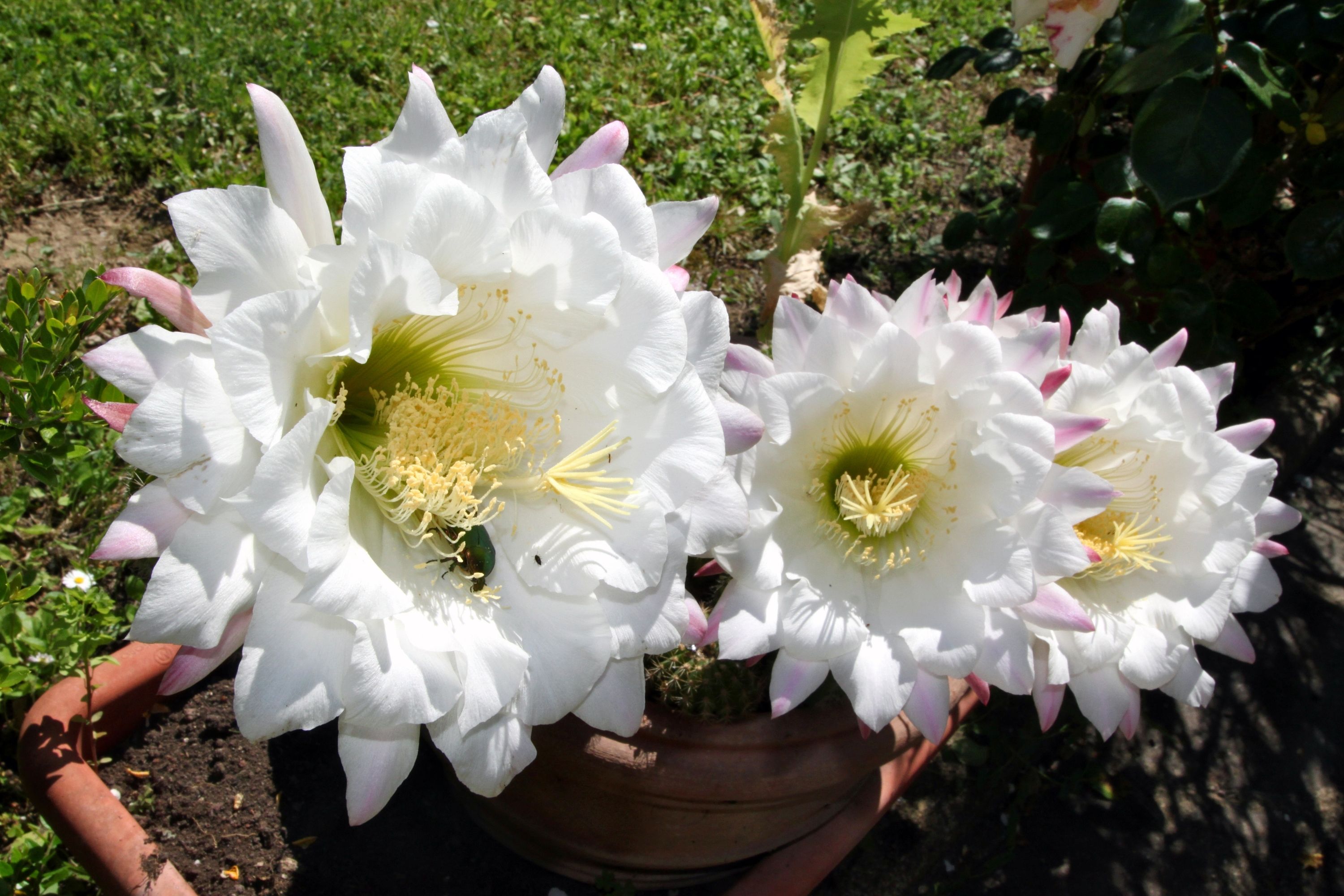Bolivian torch cactus
(Echinopsis lageniformis)

Description
Echinopsis lageniformis (syn. Trichocereus bridgesii), the Bolivian torch cactus, is a fast-growing columnar cactus from the high deserts of Bolivia. Among the indigenous populations of Bolivia, it is sometimes called achuma or wachuma, although these names are also applied to related species such as Echinopsis pachanoi which are also used for their psychedelic effects. The plant has a greenish to bluish color and usually has four to eight ribs. It can grow 2–5 metres (6.6–16.4 ft) tall with stems of up to 15–20 centimetres (5.9–7.9 in) in diameter. Spines can range in coloration from honey-coloured to brown, and are located on the nodes in groups of up to four. These spines can grow up to 6–7 cm in length and in fully grown plants are spaced evenly on the ribs, 2.5 to 3 cm apart. Several varieties of this species are highly prized by ornamental cactus collectors. These include a cristate variety, two variants of monstrose growth, and a more recently developed clone that exhibits both monstrose and cristate growth. These all tend to be much slower growing than the standard form of the species, but owing to their highly unusual shapes, they are sought after by cactus collectors. The monstrose form of Echinopsis lageniformis is known as the penis plant or penis cactus. Contrary to the typical columnar habit of the species, this cultivar displays short stem sections that branch avidly, forming a low spiny bush. The upper part of each stem segment is smooth and spineless, resembling a penis. The lower part is spiny and shows a tendency to form ribs. The plant is light green. The German name for this cultivar, frauenglück, more euphemistic than its English equivalent, translates as "women's joy".
Taxonomic tree:







